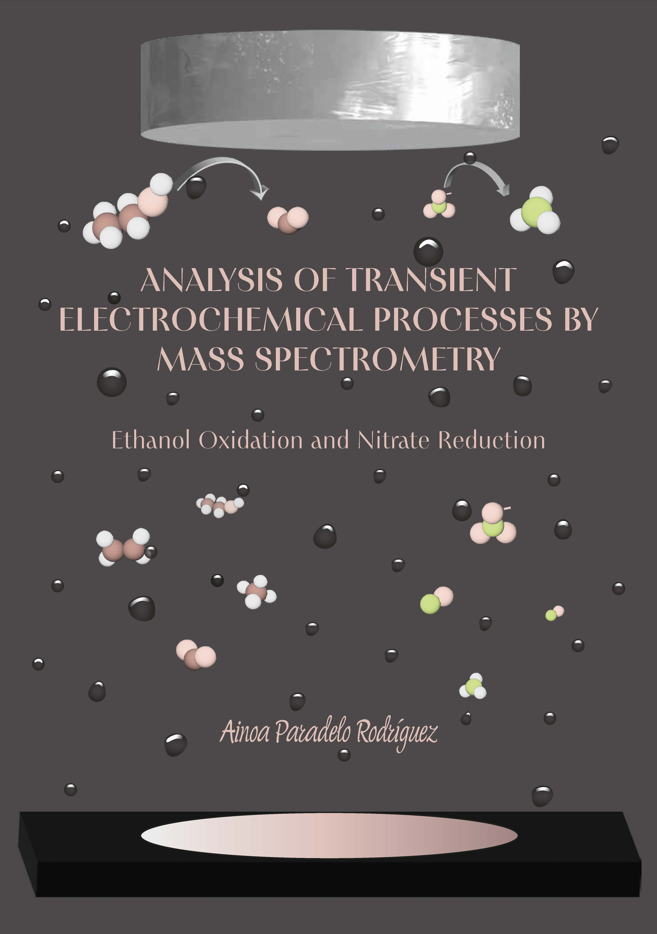
Announcement: Friday November 3, 2023 Ainoa Paradelo Rodriguez will defend her thesis titled:
ANALYSIS OF TRANSIENT ELECTROCHEMICAL PROCESSES BY MASS SPECTROMETRY
Ainoa is a PhD student in the Photocatalytic Synthesis Group. Supervisors are prof.dr. Guido Mul and dr. Bastian Mei, from the Faculty of Science & Technology.
Introduction
1
This PhD thesis goes from the fundamentals of electrochemical reactions to the
application. First, we evaluate the Electrochemistry - Mass Spectrometry (EC-MS) setup
for the fundamental mechanistic study of electrochemical reactions over metal surfaces.
Among others, the electro-oxidation mechanism of ethanol over a platinum surface and
the electrochemical reduction of nitrate to ammonia over Ti, Ag and bimetallic TiAg
electrodes have been investigated. Furthermore, there have been collaborations using
the EC-MS for other reactions that confirmed the sensitivity and versatility of this
instrument in several applications. In the last chapter, we focus on the application of the
acquired mechanistic knowledge in the nitrate electrochemical reduction over TiAg for
more practical purposes using Ti hollow fiber electrodes.
The ethanol electrochemical oxidation reaction on Pt in acidic media has been
investigated in Chapter 2. Here, with the help of the EC-MS, ethylene was revealed as an
intermediate product. Moreover, the hydrogenation of ethylic fragments was proven by
performing experiments with H2 pulses.
Chapter 3 presents a summary of the different studies in which the use of EC-MS
facilitated the investigation of electrochemical reaction mechanisms, demonstrating its
versatility. Some of the reactions investigated are the (non)-Kolbe reaction and nitrate
reduction on Ti. Moreover, the high sensitivity of the setup allowed us to detect small
amounts of NO produced by a chemical donor. Finally, the possibility of using a gaseous
reactant as a gas carrier allowed the detection of intermedia products in NO reduction
and CO2 reduction with nitrate in the electrolyte on Cu.
The nitrate reduction mechanism of bimetallic TiAg electrodes was investigated in
Chapter 4. First, chronoamperometry measurements showed a lower overpotential at
enhancement in Faradaic efficiency of the TiAg electrodes in comparison to the pure
metals (Ti, Ag). Later, the synergy between the metals was revealed by the pronounced
enhancement of NO evolution detected by the EC-MS.
After proving TiAg synergy, Ti tubular porous electrodes were modified with Ag
particles to evaluate the catalytic performance of the bimetallic material and to
understand the influence of mass transport in Chapter 5. A significant dependence of
the performance of the electrode on mass transport was discovered.
